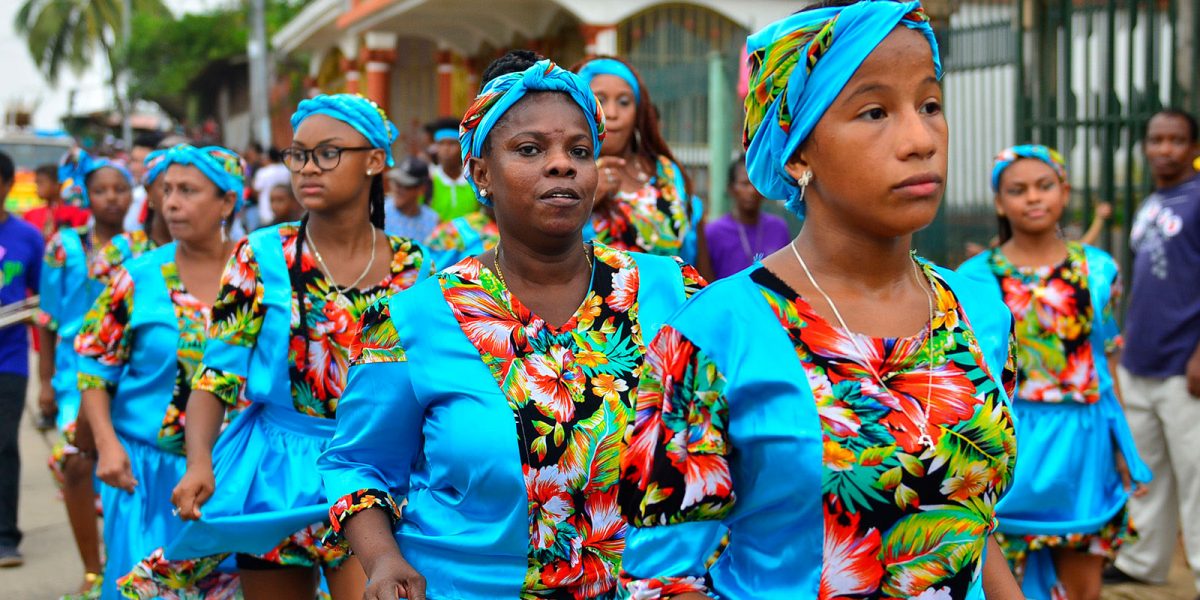Written by Delilah Cruz, Cisneros Scholar '25
Throughout my childhood, I remember my tías and papá shouting, “Pongan Palo de Mayo!” at parties. The vibrant, rhythmic singers with their drums filled the room, and not a single person was sitting down. This Black History Month, I want to pay homage to an integral part of my culture by shedding light on the Afro-Caribbean origins of the traditional Nicaraguan dance and festival, Palo de Mayo.
What is Palo de Mayo?
Palo de Mayo, or Maypole, is an Afro-Caribbean dance characterized by sensual movements and is a part of the culture in Nicaragua, Belize, the Bay Islands of Honduras, and Panama. The dance accompanies the Palo de Mayo festival in Nicaragua, which pays tribute to Mayaya, the African fertility goddess. Colorful trajes típicos, ribbons, and dancing commemorate fruitfulness, the earth, and harvest.
Origins
Although the history of the arrival of Palo de Mayo is debated amongst historians, most concur that it arrived in Nicaragua through British settlers during the English colonial occupation on the Caribbean coast. Originating from Jamaica, the main colony of the English, the dance made its way to Bluefields, Nicaragua in the 17th century. The English Maypole celebration was consequently altered by the rhythms and customs of indigenous communities and enslaved Africans. Aspects of Shango, a West African religion, were also incorporated, establishing Palo de Mayo as its own unique fusion.
Palo de Mayo Today
After the Sandinista Revolution, the government nationalized the Palo de Mayo festival in 1980 to celebrate indigenous and Afro-Nicaraguans. Previously, the festival was observed only in Bluefields, Laguna de Perlas, Corn Island, and Puerto Cabezas. May 1st launches the annual Palo de Mayo, held every weekend in a different barrio, attracting people from all over the country. Typical Nicaraguan Caribbean cuisines, such as gallo pinto con coco, soca cake, patty, pan bon, and fresco de jengibre, are enjoyed throughout the month. As for the music, the genre of Palo de Mayo is similar to calypso and socca, which uses topical lyrics with a humorous slant. Traditionally, the instruments used were the coconut stingray, donkey’s jawbone, tortoiseshell comb, washtub, hand drums, and maracas. Today, the genre has adapted to modern instruments and consists of tap drums, horn sections, electric guitar, electric bass, and organ.
Local bands play and create their music under this genre. However, the most famous throughout Nicaragua is Dimensión Costeña, who became popular in the 80s. Some of my favorite songs are “Tululu” and “Mayaya.”
Palo de Mayo symbolizes joy, family, and artistic expression. It is embedded in my identity as a Nicaraguan American and is one of the countless reasons why I am fiercely proud to be Nicaraguan. The Afro-roots of Palo de Mayo continue to resonate through every celebration and have transcended to touch different generations, encouraging nicaragüenses to carry on this important element of our culture in our hearts. In sharing this history and beautiful dance, I hope to share my culture and get people to sing “Tululu” with me.
Delilah Cruz is a Cisneros Scholar majoring in Political Science and French. Delilah's views are her own and not necessarily reflective of the Cisneros Institute.
Photo credit: Visit Nicaragua.


